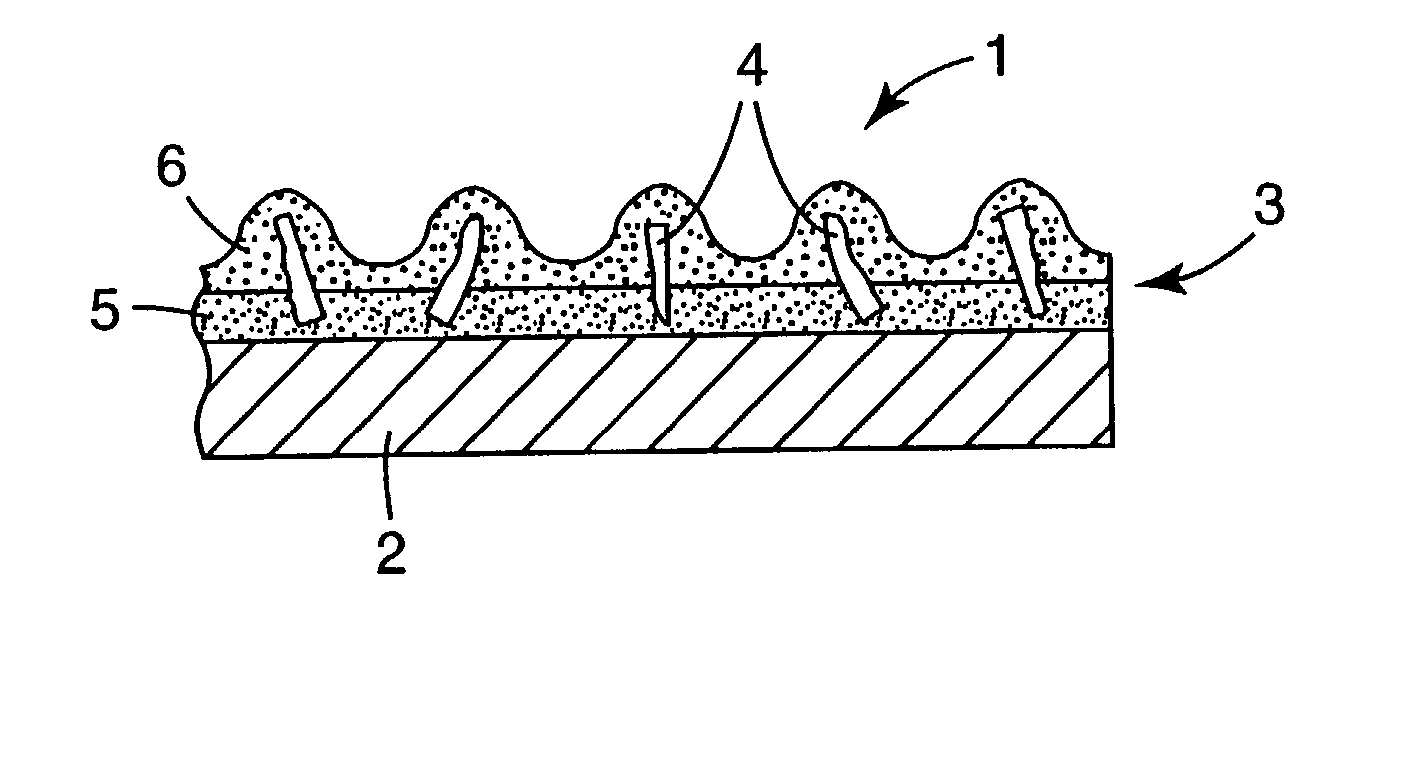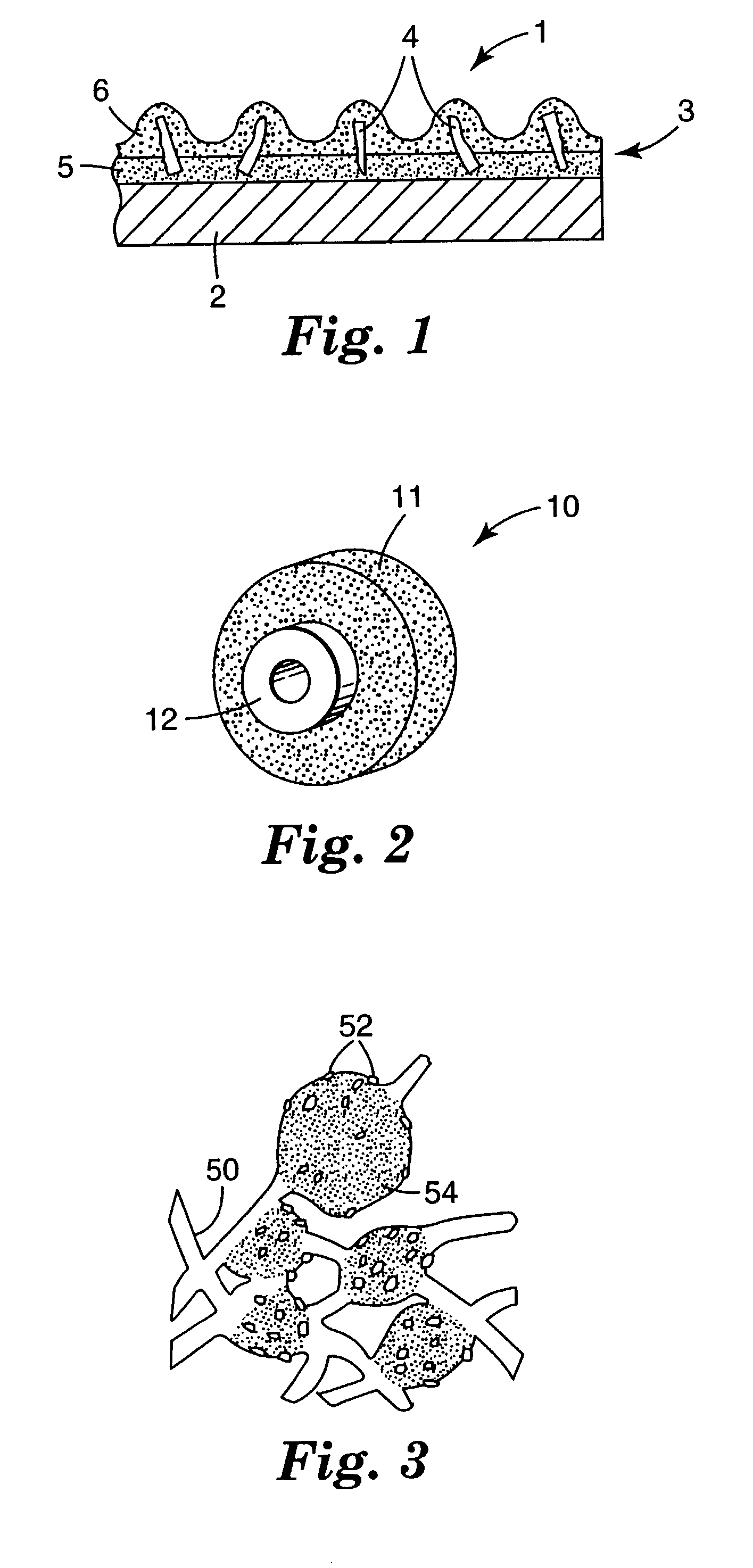Method of making amorphous materials and ceramics
a technology of amorphous materials and ceramics, applied in the field of making amorphous materials and ceramics, can solve the problems of difficult or otherwise inapplicable, formation of amorphous materials that otherwise could not be made, and cannot be made in the desired size rang
- Summary
- Abstract
- Description
- Claims
- Application Information
AI Technical Summary
Benefits of technology
Problems solved by technology
Method used
Image
Examples
examples 12
[0211] Example 12 beads were prepared as described in Examples 7 and 8 and Comparative Examples D and E, except the amounts of raw material used are listed in Table 9 and the raw material sources are listed in Table 10. A percent amorphous yield was calculated from the resulting flame-formed beads using the same method as that used for Examples 1-6 and Comparative Examples A, B, C. The percent amorphous yield data for Example 12 is listed in Table 9 along with the composition information.
9TABLE 9 Final weight Percent final Batch Weight percent percent alumina from Percent Example amounts, g of components alumina % Al metal amorphous yield Ex. 12 Al.sub.2O.sub.3: 16.7 Al.sub.2O.sub.3: 33.3 57.5 50 93 Al: 8.8 Al: 17.6 Y.sub.2O.sub.3: 16 Y.sub.2O.sub.3: 31.9 ZrO.sub.2: 8.6 ZrO.sub.2: 17.2
[0212]
10TABLE 10 Raw Material Source Alumina particles Obtained from Alcoa Industrial Chemicals, (Al.sub.2O.sub.3) Bauxite, AR, under the trade designation "A16SG" Aluminum Obtained from Alfa Aesar, Wa...
example 13
[0215] Example 13 beads were prepared as described in Examples 7 and 8 and Comparative Examples D and E, except the amounts of raw materials used are listed in Table 11 and the raw material sources are listed in Table 12. A percent amorphous yield was calculated from the resulting flame-formed beads using the same method as that used for Examples 1-6 and Comparative Examples A, B, C. The percent amorphous yield data for Example 13 is listed in Table 11 along with the composition information.
11TABLE 11 Final weight Percent final Batch Weight percent percent alumina from Percent Example amounts, g of components alumina % Al metal amorphous yield Ex. 13 Al.sub.2O.sub.3: 10.6 Al.sub.2O.sub.3: 21.2 38.5 50 96 Al: 5.6 Al: 11.2 La.sub.2O.sub.3: 23.4 La.sub.2O.sub.3: 46.7 ZrO.sub.2: 10.4 ZrO.sub.2: 20.9
[0216]
12TABLE 12 Raw Material Source Alumina Obtained from Alcoa Industrial Chemicals, particles (Al.sub.2O.sub.3) Bauxite, AR under the trade designation "A16SG" Aluminum Obtained from Alfa ...
example 14-17
[0222] Example 14-17 beads were prepared as described in Examples 7 and 8 and Comparative Examples D and E, except the amounts of raw material used are listed in Table 13 and the raw material sources are listed in Table 14. A percent amorphous yield was calculated from the resulting flame-formed beads using the same method as that used for Examples 1-6 and Comparative Examples A, B, C. The percent amorphous yield data for Examples 14-17 are listed in Table 13 along with the composition information.
13TABLE 13 Final weight Percent final Batch Weight percent percent alumina from Percent Example amounts, g of components alumina % Al metal amorphous yield Ex. 14 Al.sub.2O.sub.3: 15.5 Al.sub.2O.sub.3: 31.0 54 50 79 Al: 8.2 Al: 16.4 ZrO.sub.2: 22.0 ZrO.sub.2: 44.0 TiO.sub.2: 4.3 TiO.sub.2: 8.6 Ex. 15 Al.sub.2O.sub.3: 12.3 Al.sub.2O.sub.3: 24.5 44 50 94 Al: 6.5 Al: 13.0 ZrO.sub.2: 17.4 ZrO.sub.2: 34.8 La.sub.2O.sub.3: 13.8 La.sub.2O.sub.3: 27.7 Ex. 16 Al.sub.2O.sub.3: 9.1 Al.sub.2O.sub.3: 1...
PUM
| Property | Measurement | Unit |
|---|---|---|
| Percent by mass | aaaaa | aaaaa |
| Temperature | aaaaa | aaaaa |
| Mass | aaaaa | aaaaa |
Abstract
Description
Claims
Application Information
 Login to View More
Login to View More - R&D
- Intellectual Property
- Life Sciences
- Materials
- Tech Scout
- Unparalleled Data Quality
- Higher Quality Content
- 60% Fewer Hallucinations
Browse by: Latest US Patents, China's latest patents, Technical Efficacy Thesaurus, Application Domain, Technology Topic, Popular Technical Reports.
© 2025 PatSnap. All rights reserved.Legal|Privacy policy|Modern Slavery Act Transparency Statement|Sitemap|About US| Contact US: help@patsnap.com



